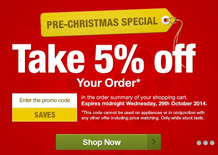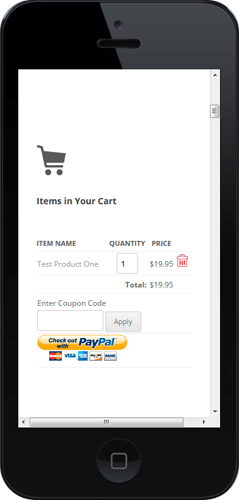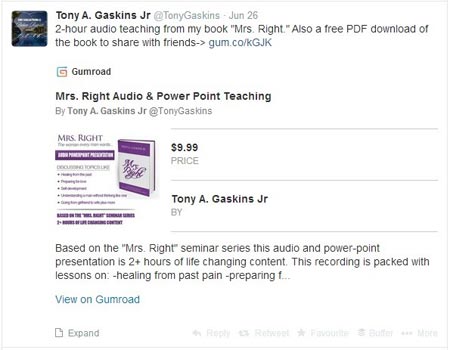Starting an e-Commerce website has become much easier thanks to WordPress. Businesses all over the world are using different WordPress e-Commerce plugins to set up fully functional online stores.
However, setting up an e-Commerce website is just one part of the equation. You also need to devise a traffic generation strategy that can create a steady inflow of visitors and potential customers.
Every traffic generation strategy starts with setting up a strong SEO structure. But there’s already a lot written about it, so I won’t discuss this in too much detail. Installing a good WordPress SEO plugin should give you a steady SEO foundation. Read this post if you want some guidance on which plugins to use.
In this post, however, I’ll focus on some of the other traffic generation and conversion strategies that the majority of e-Commerce website owners either ignore, or don’t consider important enough to invest time in them.
In reality, if you focus on these techniques, you’ll become almost completely independent of search engine traffic and have much greater control over your online assets.
1. Build Your Email List Through Incentives
Building email lists is crucial for any online business. But for e-Commerce websites, it’s a matter of survival. Without a thriving and engaged email list, you’ll find it extremely difficult to drive repeat sales from your customers.
You don’t just need traffic. You need visitors that convert into subscribers and potential customers. An email list will help you achieve that and allow you to work on your subscribers and drive sales.
A smart way to build your email list is by offering something that holds immediate value to the user. For online shoppers, nothing is more lucrative than a discount coupon. Offer this as an incentive to sign up for your mailing list.

Place your opt-in box at a prominent place, preferably in the header, of your website. You can also promote it with a pop-up box plugin.
Converting your existing traffic into customers is much more effective and easier as compared to generating completely new traffic. Incentive based email signups are the perfect way to boost conversions.
2. Use Blogging To Attract Links and Traffic
Any e-Commerce store that’s not blogging is missing out on hundreds of potential customers. Blogging has to be a fundamental component of your traffic generation strategy.
The purchase decisions of almost 62% US customers are influenced by blog content. Customers have become much more aware and do a lot of research before purchasing anything online.
Blog content will give you greater exposure in search engine results and send you much more qualified traffic. To take full advantage of blogging, break your content into different categories.
- Industry News: Share the latest developments and news from your industry.
- Success Stories: Share success stories of your previous customers who’ve benefited in any way from your products.
- Resource Posts: Create detailed 1500-2000 word posts that cover individual topics of your niche in detail. Make these posts as actionable as possible. Resource posts attract a lot of social shares and traffic.
Your blog content should complement the nature of your business and the type of products you sell. It should demonstrate your industry knowledge and present you as a credible voice in your niche.
 3. Use Guest Blogging for Brand Awareness
Guest blogging is one of the best ways to enhance your brand image, get high quality backlinks and attract qualified traffic. A lot of people use guest blogging for SEO only. In my opinion, that’s a bad strategy. You can get so much more out of guest blogging.
Identify the most popular blogs in your niche, study their posts and reader comments. Try to understand what your potential customers are looking for. Then create a high quality guest post and offer it for free to your target blog.
To boost your traffic and email subscribers from guest blogging, offer something special for the readers. For example, you can add the following offer at the end of your blog post.
“I’m a huge fan of (YourTargetBlog.com), so I’m offering an exclusive 30% discount coupon on all our products. Click here to get your discount!â€
Route these readers to a squeeze page where they’re required to enter their email address to access the discount coupon. The main idea here is to drive as much action from the readers as possible.
Note:Read this post to learn how to create a high conversion squeeze page
4. Use a Responsive eCommerce Store Design
Online shopping is quickly moving to smartphones and tablets. Mobile visitors constitute the majority of ecommerce traffic and are almost twice as likely to make a purchase. For this reason, your website and online store must use a responsive design to accommodate mobile and smartphone users.
Failing to do so will provide a poor browsing experience to your users and increase the bounce rate of your website, which of course will directly hurt your search engine rankings. Google downgrades the rankings of websites, not using responsive web design, in its mobile search results.
To avoid this, make sure your WordPress theme uses responsive design.

5. Create Content Rich Product Pages
For most eCommerce websites, the product pages attract the highest traffic from search engines, since most users search with product names and models. To take advantage of your product pages, make sure they have the right structure, along with lots of relevant content.
- Titles: The title should contain the main product name, its model number and color
- Description: Product description is the most crucial part of the product page. Make sure it is quite detailed and includes all the relevant information about the product. Break it down into bullet points to increase readability.
- Images: Few high quality product images from different angles not only improve your user experience, but also give your products added exposure in Google Image Search.
- Reviews: The more reviews your product has, the better for its search engine visibility.
- Similar Products: Displaying similar products at the end of the product page can greatly improve the internal link traffic of your website.
- Related Blog Posts: Show links to related blog articles on your product page. This will increase internal linking, give exposure to your blog content and help your users make the right purchase decisions.
6. Create an Integrated Social Media Strategy
eCommerce and social media go hand in hand. But to really benefit from social media, you need to use it as a part of a broader traffic generation and branding strategy. Instead of stretching yourself too wide, focus on the most engaging social media platforms for your niche. Usually, for eCommerce websites, they are Facebook, Twitter, Pinterest and Google Plus.
Here are a few points to keep in mind for each of these platforms.
- Create a Facebook business page.
- Use Facebook advertising to your advantage. It can be more effective than Google Adwords sometimes and has a much lower CPA (cost per lead acquisition). Start with a small budget, test different ads and then gradually increase the investment. Special discount offers and direct product advertisements usually have the highest impact. But you should try different ads to see what works best for you.
Enable Twitter cards on your blog and product pages. Twitter cards display additional product information with each Tweet and increase the purchase probability.

- Pinterest is ideal for some eCommerce websites.
- Create a Pinterest Business Page and enable Rich Pins on your account. Just like Twitter cards, Rich Pins also display additional product information with every Pin.
Google Plus
Create a Google plus page for your business.
The key objectives with social media marketing are customer acquisition, engagement and conversion. Look to route as many social media followers to your email list, as possible. But without proper engagement, conversion into email subscribers or paid customers is highly unlikely.
7. Get Referral Traffic Through Influencer Outreach
Another extremely effective way to increase your online store traffic, is by connecting with the influencers in your niche. This is a slightly long term technique, but its returns are worth the time and effort.
The basic idea behind influencer outreach is to build relationships with the key professionals in your niche, and then use their influence to drive more traffic to your website.
There are a number of ways you can do that:
- Make a list of all the influencers in your niche. Select the ones you want to target for outreach.
- Follow them on all their social media accounts – specially Twitter.
- If they have blogs, subscribe to their list.
- Study their blog content and social media updates, and try to understand the kind of content they like.
- Respond to their Tweets and Facebook updates, and comment on their blog posts. Get in their radar.
- Create round up posts on your blog – for example, posts like “The best posts of the week in (your niche)â€. Include posts from your target influencers in the list. Send a quick Tweet to let them know about it.
- Create interview posts by sending one question to all the influencers in your niche. Compile their answers in one post, and publish it on your blog. Let all of them know about it.
To simplify influencer identification on Twitter, you can use Followwonk. This tool helps you identify the most active users in your niche who’re getting the highest engagement on their Tweets.
Relationship building takes time, but if you’re consistent with it, even one recommendation or endorsement from a niche leader can send a lot of visitors to your online store.
Conclusion
Traffic generation is a continuous struggle for most eCommerce websites and online stores. You cannot simply rely on SEO and then sit back and relax. You need to consistently create high quality content around the core products in your store to attract new visitors, convert them into email subscribers and then eventually into paid customers. A traffic generation strategy built around high quality content is much more dependable and offers long term returns.
Thanks for sharing these useful tips. This article has helped me identify many mistakes that I have been making. For example I am using Mailchimp to build my email list but I never offered anything to the subscribers as an incentive. Some of the tips you shared (e.g. FB ads and Twitter cards) are new to me. I won’t say that I never heard of them, I never personally tried them.
Again thanks for sharing your expertise.